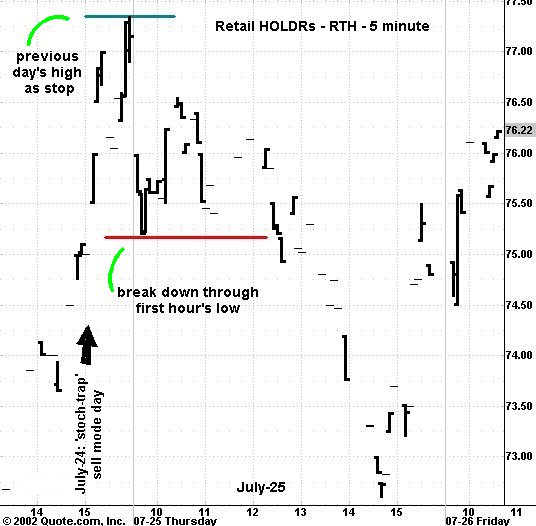Give Me Something to Lean On: Understanding The Purpose Of Chart Patterns
10.0pt;font-family:Arial;color:black”>
Good afternoon
and welcome to TraderTalk. Today we have with us a gentleman who holds a CMT
designation, has worked as a price risk manager for the Louis Dreyfus
Corporation, and has written articles for Stocks and Commodities
magazine. He
began his career in 1988 as a cash agricultural commodities trader. He currently
is a proprietary trader for a NYSE member firm. It is my great pleasure to
introduce Mr. Dan Chesler…
10.0pt;font-family:Arial;color:black”>: Thank you Brice, for that introduction.
And thank you also to all the traders who have taken time to join us today.
Before I begin I just want to say that my association with TradingMarkets which
began in May has been a very happy one. Most you who have been with TM for any
length of time know the quality of the content contained on this site, and the
caliber of people here, are the best in the business. It is truly an honor to
work with folks like Larry, Brice, Duke, Dave et al.
The topic of my conversation today is on chart patterns. And more generally, on
the subject of trading. Along the way to becoming a full time trader, you really
need to decide what you believe in. You can’t be without some kind of consistent
approach to the market. I’m not mechanical or “system” trader, but I do have a
set of beliefs about the market that took a few years to develop.
Without some kind of roadmap that tells you where you are in the market, you
will be lost. So my advice to any new traders is to take your time until you
find that approach or technique that really “speaks to you.” I use chart
patterns as a means of trading first, and forecasting second.
That probably contradicts what some of you believe about chart patterns. The
truth is most chart patterns are at best a 50/50 proposition. Some are a little
better than others, but overall they’re only mildly predictive. However, chart
patterns serve a very useful function for trading.
color:blue”>SPECIFIC10.0pt;font-family:Arial;color:blue”>
stoch-trap
(ST), and the
incipient trend pattern (ITP). In
addition, I am a big proponent of classical chart patterns. This is a very
subjective area for most folks. In my own trading, after enough years of
experience, I’ve gotten to the point where I know how to treat “subjective”
patterns as objective ones, but I’m not going to get into that topic in this
discussion. Basically it’s a technique that involves distilling the bar chart
down into separate volatility and periodicity components. Maybe we can talk
about that another day.
font-family:Arial;color:black”>
10.0pt;font-family:Arial;color:black”>
font-family:Arial;color:black”>
font-family:Arial;color:blue”>:
font-family:Arial;color:blue”>Dan, do you suggest using the SMA 50 or the MACD
5/35 as the second condition for a Stoch Trap? The Stoch Trap strategy I made
for TradeStation uses the SMA 50 because it’s slightly simpler to implement.
Also, how did you choose the 5/35 MACD numbers?
font-family:Arial;color:black”> I’ve used them both and there’s not much
difference between them. I like to use the 5/35 MACD for bigger picture
analysis, and so if I’ve got the MACD on my charts, I’ll sometimes just leave it
there rather than switching over to the 50 day average. But really it makes very
little difference.
font-family:Arial;color:black”>
font-family:Arial;color:black”>Like Austin Powers says in his movie, “That’s not
my bag, baby!” Forecasting is secondary to trading. Trading is about making
money. The only forecasting I do is in terms of predicting whether markets are
near a point where there are about to move “efficiently” or not. I don’t care if
I get the direction wrong seven times out of ten times, so long as my losing
trades are small. The other three are going to more than make up for the losers,
plus increase my account balance. I think Brice wants to wrap up now. So thanks
again for being here today and good luck in the markets tomorrow
font-family:Arial;color:black”> You bet. Dan, thanks for a fantastic
presentation. Thanks again, Dan, and
good trading to all!
![]()





For The Best Trading
Books, Video Courses and Software To Improve Your Trading
